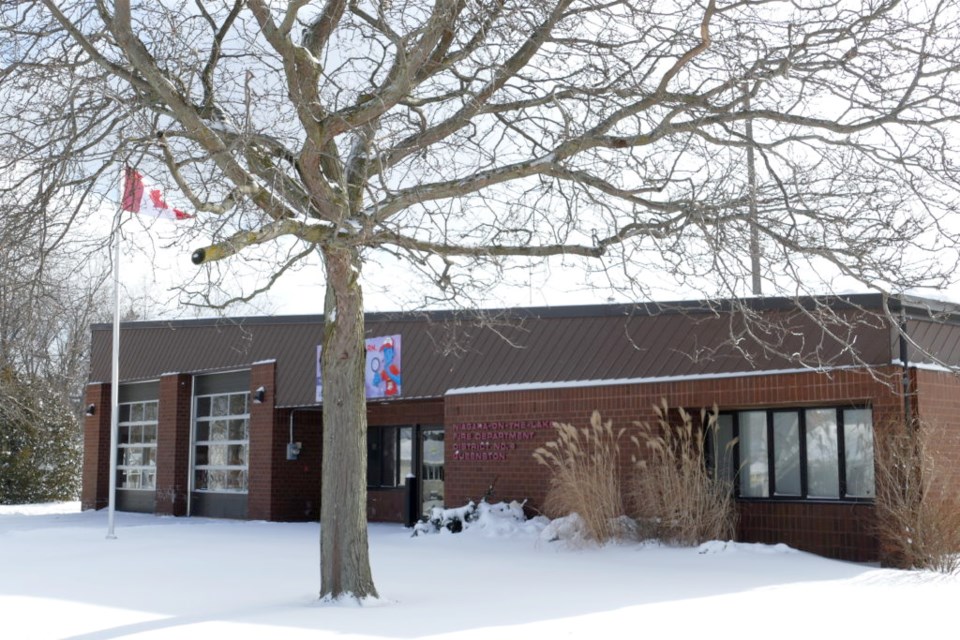
Ongoing problems with the Queenston fire station that began when it was built almost 45 years ago have resulted in a move toward consolidating it with St. Davids.
Councillors were given an extensive report on the history of issues with the Queenston station Monday, and recommendations to consider: that they ask for an analysis of the St. Davids station and operations; that a report on the viability of consolidating St. Davids and Queenston stations be requested; and that a funding strategy be developed for the potential construction of a new, consolidated fire station, including potential locations.
With just a few questions and little discussion, councillors agreed to all recommendations, moving toward a solution that has been discussed and deferred for decades.
In January, 2019, former Fire Chief Rob Grimwood presented information on the viability of the Queenston station to council, referencing reports going as far back as 1971, six years before the facility was built, and everything he could find relating to it since.
Over the decades, councillors learned, it had been suggested several times that the Town look at a long-term plan for St. Davids and Queenston stations, including whether each of the two communities required its own facility, or whether they could be combined.
Several of the early reports referenced by Grimwood indicated there had been an ongoing consideration of closing Queenston and St. Davids stations and building a new one on York Road, or covering the two districts out of the St. Davids station.
Instead of making a decision when those reports were discussed, councils of the day deferred the issue.
The Queenston station has had structural problems since it was built, but the contractor went out of business before those issues could be addressed, and because of its age, it has become expensive to maintain, those reports indicated.
In February, 2019, council asked staff to provide a further analysis of Grimwood’s report, with recommendations of future action.
The result of that request was the report councillors had before them Monday, which says that several years after the building of the Queenston station, an undated report with an unknown author (assumed to be the fire chief at the time) advocated for the replacement of the Queenston station rather than an amalgamation with St. Davids, as recommended by Office of the Fire Marshal report in 1971. The author cited firefighter resignations ‘en masse’ if an amalgamation was forced upon the two affected stations.
In 1996, in response to recommendations made by the Office of the Fire Marshal, the report says, discussion of amalgamation of the two stations was reignited, with a follow-up report again recommending they be combined. Again, no further action was taken.
It’s been an emotional issue, Fire Chief Nick Ruller told councillors Monday, when asked about the comment of years ago of possible resignations if the two stations were combined.
“There is definitely an emotional attachment from our members,” said Ruller. “They’re members of the community, and have invested a lot in the organization.”
The fire chief said before presenting the report to councillors, he had called an open forum for firefighters from all stations Sunday to hear and discuss the recommendations in his report.
They understood what was being proposed, and offered constructive comments, he said.
As to the threat of years past about resignations, he said, “we’re not seeing that type of concern amongst our members.”
Another report to council in 2006 again referenced the consolidation of the two stations, but there was no further discussion. Since then, there have been several reports on the condition of the Queenston facility, including the existence of structural defects. Some remedial work was completed, but there continued to be issues that were not addressed. In 2010 and 2018, structural engineer reports note various issues and identifying possible causes, but “didn’t come up with anything conclusive,’” this report says.
The station continues to develop cracks that require maintenance, and “it is not uncommon for these gaps and cracks to grow to a size where one can see light passing through the exterior walls,” says the report presented to councillors Monday.
The facility is also lacking in space for operating effectively or meeting current health and safety standards, and requires an estimated $20,000 for HVAC repairs.
A 2017 building condition assessment estimated maintenance and repair costs for the Queenston station, through to 2046, to total $572,100.
As for station calls, while the number within the Queenston district remains consistent, the need to respond outside the district has declined, representing “a 55 per cent decrease in demand for Station 4 (Queenston) resources across the municipality in 2019, when compared to the 15-year average.”
Despite that decline, the report continues, Queenston firefighters and apparatus “prove valuable to provide coverage and surge capacity for the municipality during a large-scale incident.”
The 2016 census shows a population of 370 people in Queenston’s urban area, with limited opportunities for residential growth.
The St. Davids urban area census shows 1,670 people, with several areas approved or designated for future residential growth, the report says.